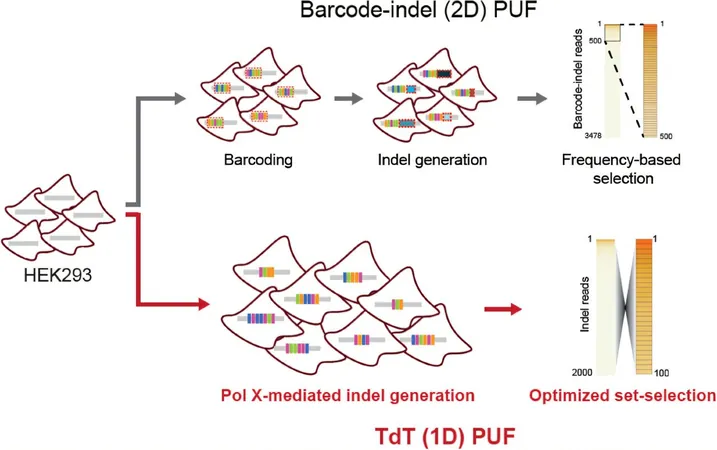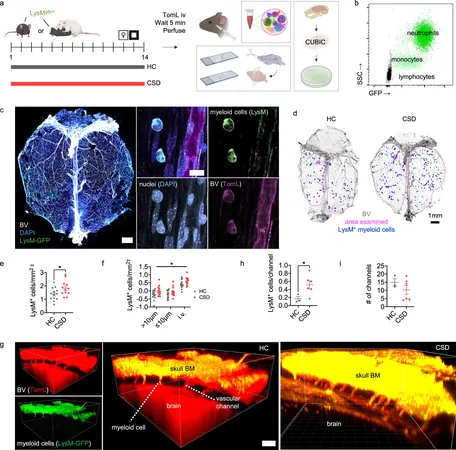
Revolutionary Genetic IDs: A Game-Changer for Engineered Cells
2025-09-03
Author: Li
Tackling the Crisis of Cell Misidentification
In the high-stakes world of biomedical research, genetically engineered cells are the backbone of pivotal discoveries. Yet, a staggering problem lurks beneath the surface—misidentification and misuse of these cell lines cost the scientific community billions and threaten groundbreaking breakthroughs.
A Breakthrough from The University of Texas at Dallas
But a team of brilliant researchers at The University of Texas at Dallas is flipping the script! They've unveiled an innovative solution that embeds unique genetic identifiers—like barcodes—directly into engineered cell lines. This unprecedented technology promises to eliminate errors and fortify copyrights against unauthorized exploitation.
The Vision Behind the Innovation
Leading the charge is Dr. Leonidas Bleris, a bioengineering professor, who emphasizes the necessity of reliable verification methods. "With thousands of genetically engineered cell lines in circulation, we need to ensure we can trace their identity and origins efficiently," Bleris stated. Their study, showcased in the journal Advanced Science, highlights this cutting-edge technology.
Cell Lines: The Backbone of Medical Advancements
Custom-designed cell lines are crucial in developing vaccines and targeted treatments across various diseases. With the rapid rise of CRISPR technology, the creation of new cell models has exploded, but authentication processes have lagged behind, leaving valuable research vulnerable to error.
Introducing Tamper-Proof Genetic Fingerprints
Inspired by security measures used to protect microchips, the UT Dallas team has crafted a remarkable patent-pending technique that applies the concept of physical unclonable functions (PUFs) to living cells. These unique genetic fingerprints serve to safeguard cell lines against duplication.
Streamlined and Efficient: A One-Step Process
In a breakthrough from a two-step process introduced in 2022, researchers have now streamlined their method into a single-step protocol, enhancing ease of implementation. This enhancement significantly increases the accessibility of the technology for biotechnology companies looking to protect their products.
The Science Behind the Method
Employing the CRISPR system, the researchers deploy Cas9, a powerful enzyme that cuts DNA precisely where needed. They target a safe-harbor location in the genome to introduce modifications without disrupting cellular function. Following this, the terminal deoxynucleotidyl transferase enzyme helps repair the DNA break while integrating random DNA sequences, creating a distinctive pattern that identifies each cell line.
Advancing Identification through Machine Learning
In addition to their genetic innovations, the team has unveiled machine learning tools capable of verifying cell line identities. Taek Kang, a bioengineering researcher and co-lead author, explains, "Our machine learning approach harnesses intricate genetic fingerprints, significantly elevating the precision of cell-line identification."
A New Era for Biotechnology Companies
With these groundbreaking advancements, biotechnology companies can now protect their engineered cell lines like never before—ensuring that innovative ideas flourish without the threat of misidentification or unauthorized usage.


 Brasil (PT)
Brasil (PT)
 Canada (EN)
Canada (EN)
 Chile (ES)
Chile (ES)
 Česko (CS)
Česko (CS)
 대한민국 (KO)
대한민국 (KO)
 España (ES)
España (ES)
 France (FR)
France (FR)
 Hong Kong (EN)
Hong Kong (EN)
 Italia (IT)
Italia (IT)
 日本 (JA)
日本 (JA)
 Magyarország (HU)
Magyarország (HU)
 Norge (NO)
Norge (NO)
 Polska (PL)
Polska (PL)
 Schweiz (DE)
Schweiz (DE)
 Singapore (EN)
Singapore (EN)
 Sverige (SV)
Sverige (SV)
 Suomi (FI)
Suomi (FI)
 Türkiye (TR)
Türkiye (TR)
 الإمارات العربية المتحدة (AR)
الإمارات العربية المتحدة (AR)